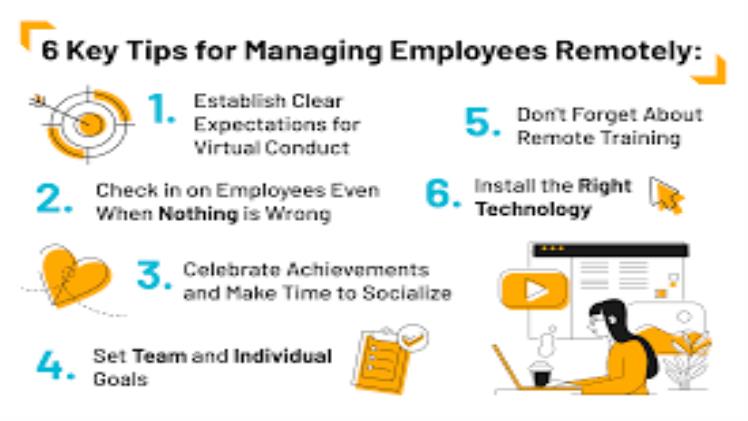Mastering Remote Team Management: Best Practices And Tools

In today’s fast-paced business landscape, remote team management has become vital. As companies shift towards flexible work arrangements, understanding how to manage virtual teams effectively is crucial for success. This guide will explore essential strategies, tools, and best practices to help you navigate the unique challenges of managing remote teams.

Key Challenges in Managing Remote Teams
Managing remote teams presents distinct challenges that can impact productivity and morale. One of the most significant hurdles is communication barriers. When teams are dispersed, misunderstandings can arise easily. According to a study by Gallup, remote workers often feel isolated, leading to disengagement.
Another challenge is maintaining productivity. Without direct supervision, some employees may struggle with motivation. A report from Buffer highlights that 20% of remote workers cite distractions at home as a primary obstacle.

To overcome these challenges, it’s essential to implement clear communication protocols and set transparent expectations. Regular check-ins can foster connection and accountability, ensuring that everyone stays aligned with company goals.
Best Practices for Remote Team Management
To thrive in a remote work environment, consider these best practices for remote teams:
-
Establish Clear Goals: Define specific, measurable objectives for your team. Use tools like Trello or Asana to track progress and ensure everyone is on the same page.
-
Encourage Regular Communication: Use platforms like Slack or Microsoft Teams to facilitate daily interactions. Schedule weekly meetings to discuss updates and challenges.
-
Promote Flexibility: Allow team members to work during their most productive hours. This flexibility fosters trust and boosts morale.
-
Recognize Achievements: Celebrate team and individual successes. Acknowledgment can significantly enhance motivation and employee engagement in remote work.
-
Provide Ongoing Support: Regularly check in with team members to offer assistance and guidance. This shows that you value their contributions and are invested in their success.
By implementing these strategies, many companies have seen remarkable improvements in productivity and team cohesion. For instance, GitLab’s fully remote workforce has thrived by adhering to these principles, promoting transparency and collaboration.

Tools and Technologies for Remote Teams
Leveraging the right tools for remote team management can make a significant difference in productivity and collaboration. Here are some essential tools to consider:
- Zoom: Ideal for video conferencing, enabling face-to-face interactions that can help bridge communication gaps.
- Slack: A robust messaging platform that facilitates quick communication and file sharing among team members.
- Trello: This project management tool allows teams to visualize tasks and track progress, promoting accountability.
- Google Workspace: Offers a suite of productivity tools that enhance collaboration, such as Docs, Sheets, and Drive for file sharing and real-time editing.
Integrating these tools can streamline workflows and foster seamless communication, making remote team management more efficient.

Building a Strong Remote Team Culture
A positive team culture is vital for employee engagement in remote work. Here are strategies to foster a cohesive team environment:
-
Virtual Team-Building Activities: Organize online games or social hours to encourage camaraderie among team members. Companies like Zapier regularly host virtual happy hours to strengthen relationships.
-
Create a Shared Vision: Ensure everyone understands the company’s mission and values. This alignment can enhance motivation and drive.
-
Encourage Feedback: Create an open feedback culture where team members feel safe sharing ideas and concerns. Regular surveys can help assess team sentiment and identify areas for improvement.
By focusing on these strategies, remote teams can cultivate a strong, inclusive culture that drives engagement and performance.
Conclusion
In conclusion, effective remote team management is essential for navigating the complexities of a distributed workforce. By addressing key challenges through proactive communication and clear expectations, implementing best practices, and utilizing the right tools, you can create a productive and engaged remote team. Embrace these strategies and tools to master the art of remote team management and watch your team thrive. Start today by assessing your current practices and identifying areas for improvement!